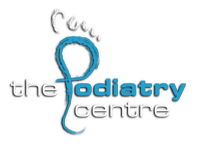Growing feet – Part 1, Toeing-in.
Concerns about the normal development of the lower limbs as a child grows is often the primary reason parents bring their kids to a visit to the podiatrist. The fact is that many of the perceived ‘abnormalities’ may be within the normal parameters for the childs age. The continually changing bodies of children will often correct any abnormal alignment issues that arise during their growth cycle. The most concerning variants include genu varum (bow legs), genu valgum (knock knees), intoeing, out toeing and flat feet. Below will be a brief explanation of the normal development of these most commonly occurring variants. If your child shows characteristics outside of those listed, an appointment with the podiatrist may be warranted.
In toeing is often characterised by inward pointing toes. It is much more common than out toeing and can often be responsible for recurring falls in children due to tripping. Boys and girls are equally affected.
Causes
1. Metatarsus adductus
Is a congenital deformity of the forefoot in which the metatarsals deviate towards the body midline causing in-toeing. It predominately occurs in males and is first noticed in the first year of life. Most cases resolve spontaneously by age 10-12 however severe deformities may require an initial treatment which may consist of strapping and/or casting of the feet in the neutral position.
2. Internal Tibial Torsion
This is often the most common cause of in-toeing usually seen in children between the ages of 2 and 4. It occurs in both boys and girls and often the presenting sign is clumsiness and repeated falls either at home or in the playground. A physical assessment will often show an abnormal thigh foot angle. This abnormality usually corrects itself by age 8 through physical therapies such as stretching. If the condition persists past the age of 8 or an assessment shows a thigh-foot angle of more than 15 degrees, surgery may be indicated.
3. Increased femoral internal rotation
This abnormality is usually observed in early childhood and is particularly severe between the ages of 4 and 7 years. It has been shown to have a very strong genetic link with mainly girls being affected. The classic signs that are presented include the patella (knee caps) facing inwards (a situation known as ‘squinting patella’) and these children are often seen sitting in the typical W sitting position. An assessment would involve assessing the hip range of motion of the child to look for any abnormalities in range of motion. Similarly as with increased tibial torsion, increased femoral internal rotation settles by 8-10 years of age. Orthotics and physical therapies may be helpful in improving gait parameters. Educating parents and children on importance of avoiding W-sitting is another vital step to reduce internal rotation. Surgical intervention may be indicated if no improvement is seen pst the age of 12.
If this is all too complicated, don’t hesitate to see our Podiatrist for a personalised professional opinion.
Dr Anel Kapur (Podiatrist)
